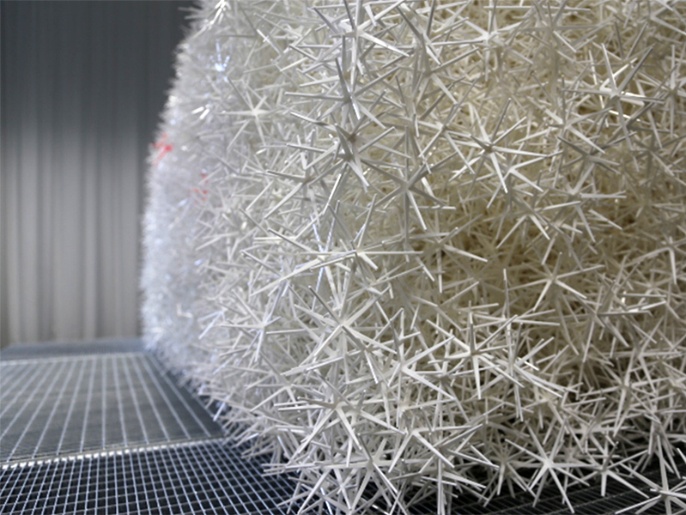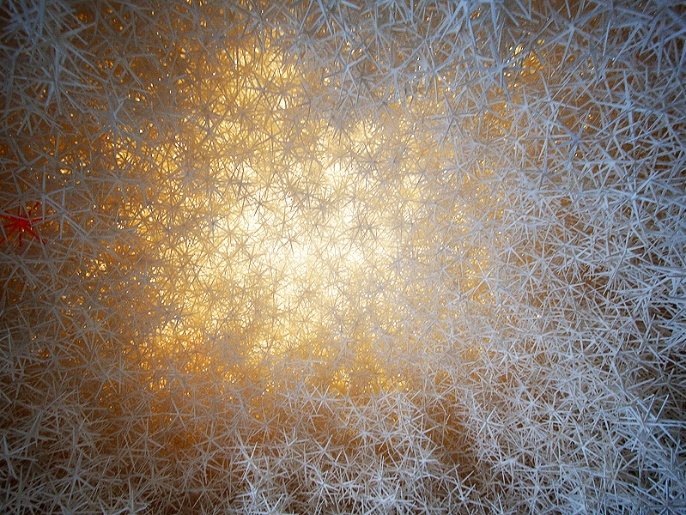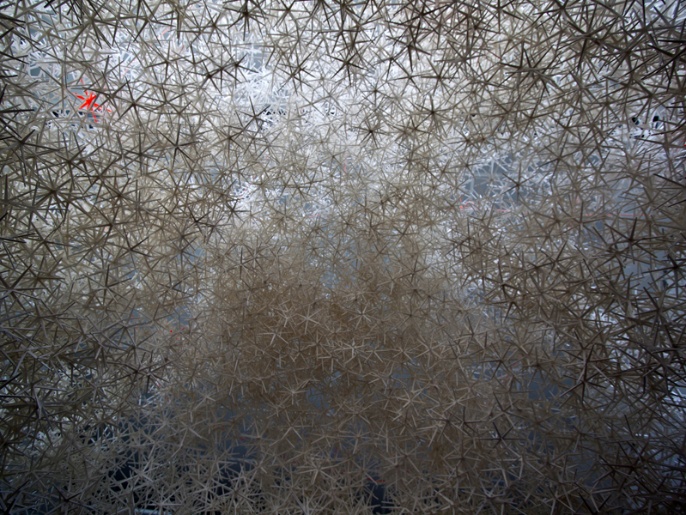The five-day workshop Informed Matter – Aggregate Structure conducted at the Institute for Computational Design at Stuttgart University explored the formation of full-scale aggregate structures under compression through jamming of non-convex designed granulates.
Aggregates are defined as large amounts of unbound elements lying in loose frictional contact. In nature they are known from systems like sand or snow. In the building industry they are mostly used as an additive in concrete construction, yet are rarely explored in their unbound form.
As opposed to their relative novelty within an architectural design context, loose granulates bear several characteristics which are specifically suited for building design applications – especially if the individual granulate is custom-designed. On the one hand these synthetic aggregate structures are fully re-configurable as they can reversibly move from liquid to solid states. On the other hand they can be functionally graded within one and the same material system, through admixing of variable-property granules during the pouring process.
Especially relevant is the development of novel design methods as the loose granulates cannot be controlled using conventional design- and fabrication methods. They rather need to be observed using both material and machine computational techniques such that an interaction rather than an actual planning process occurs between the granular material system and the designing architect.
During the workshop initial experiments on various pouring and formwork methods were conducted both on a 1:3 and 1:1 scale. The final tests were set up as a large-scale tank-model measuring 3 by 3 meters filled with 50000 granules. No formwork but the aggregate itself was used. Granules are allowed to flow out at the bottom of the container and are consequently loosely removable around the structure, eventually leaving a self stabilizing vault from a largely recyclable mass: Only an average of 10 per cent of the overall granulates were needed for the actual stable structure which renders the entire system highly redundant and at the same time recyclable similar to processes which can be observed in erosion. Hole- and Arch-formation within the dome-structure itself sets in if material is further removed up to a point of collapse. The granular structure uses no binding agent but is merely stabilized through compression between the individual particles.
Institute for Computational Design
Karola Dierichs, Professor Achim Menges
Workshop Participants
Serge Deisner, Peter Kohlhammer, Lisa-Marie Koslitz, Ondrej Kyjanek, Martin Loucka, Martin Nautrup, Maria Petkova, Josephine Roß
Cooperation Partners
ITASCA Consulting Group, Inc. – Dr. S. Emam, Dr. L te Kamp, Dr. M Purvance, Dr. R Taghavi
Institute of Engineering Geodesy – A Scheider, Professor V Schwieger






